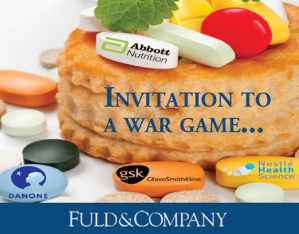
Just how many “me too” cholesterol-lowering agents do we really need? (Photo Courtesy: The Daily Mail)
The pharmaceutical industry’s fundamental business model has become increasingly less attractive in the last two decades, and a number of firms and industry experts have advocated large-scale change (e.g., E&Y’s Pharma 3.0 strategy, McKinsey’s pharma manufacturing revolution) in how pharmaceutical companies do business. In particular, GlaxoSmithKline (GSK) has staked much of its future success on pairing its longstanding strengths in traditional pharmaceutical product development with a top-down mandate to grow the size of its customer base in the 50 poorest countries in the world. Currently, these markets have less than 5% market penetration by Western pharmaceutical companies, and GSK views these underserved populations as missed opportunities for sales and revenue growth.
Last summer, three of us from Saïd Business School’s MBA Program, the London-based the International Centre for Social Franchising, and GSK collaborated to identify innovative, replicable models that would improve GSK’s ability to access and serve populations in developing countries. This work was based on an underlying assumption that a host of creative delivery models existed but were difficult to identify and evaluate. Once found and verified, GSK could partner and contribute as an investor, operational and technical expert, and multinational influencer as a means of scaling up and replicating these initiatives across multiple national markets.
The study team used a mixture of high-throughput quantitative methods and visit-based qualitative interviews. The former helped the team to screen a 1200-item aggregated universe of programs and identify common program type and geographic foci of innovation. The team then traveled to these geographic hotbeds, visiting over 50 delivery models and technical experts spread across Kenya and India. The major findings of this study included both overarching themes that were applicable to nearly every program visited (e.g., poorer customers are highly price-sensitive but will pay a premium if they value a product highly relative to other needs) as well as model-specific themes that relate to specific success factors for a given model type (e.g., social marketing programs usually required a local NGO partner with an established source of trust in the community). Some of the original assumptions of the study team were challenged by the findings. For example, the number of financially-sustainable, scalable projects that were worthy of multinational investment or partnership – and did not already have it – was exceedingly small.

Packaged food manufacturers have a longstanding history of rapidly altering prices, products, and brands to suit the needs of consumers best. What features of such everyday innovation would best suit the pharmaceutical industry? (Photo Courtesy: Paul Mullins)
Recommendations were developed with a variety of near-term actionable items (e.g., what to invest in, how to invest) for GSK as well long-term strategic considerations. The most universally relevant of these findings was a need in the pharmaceutical industry to rethink how it develops business strategies for these new, atypical markets. It could be argued the hunt-and-peck strategies that many pharmaceutical companies are using to experiment with new business models are inherently flawed. Instead, our team of MBAs recommended a variation on an approach popularized by many fast-moving consumer good firms (FMCGs; e.g., Procter&Gamble, Unilever). Although models vary, open innovation frameworks or innovation hubs typically create an internal business unit at large multinationals that standardizes how promising new business models are screened, evaluated, tested, and replicated. For example, many of the new products developed today at Procter & Gamble and Mars are rapidly rolled out in this way. These lean workgroups allow otherwise large, complex companies to nimbly experiment with an approach that accepts failure as learning activities and rapidly identifies promising goods or services for corporate scale. Pharmaceutical multinationals looking to expand in the developing world will need to build a similar series of internal systems and processes to remain competitive.
Contributions to the work described here were provided by Andy Thornton (Oxford MBA 2012), David Wong (Oxford MBA 2012), Jackie Horn (ICSF), and Dan Berelowitz (ICSF). Public findings from the completed study can be found here.
Disclosure: The work our team completed for GSK described above was a professional consulting project with financial remuneration conducted in collaboration between Saïd Business School, the ICSF, and GSK.
